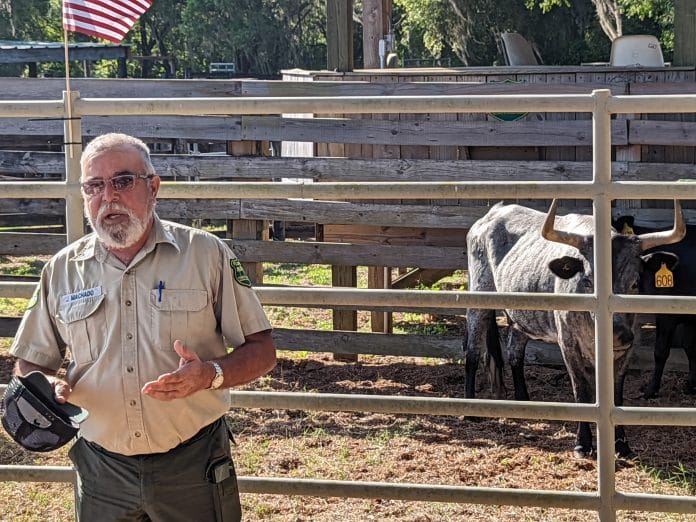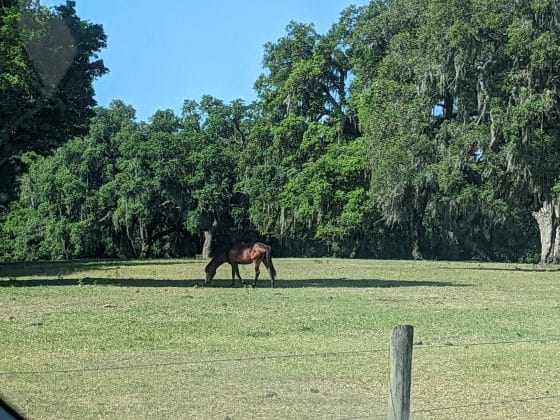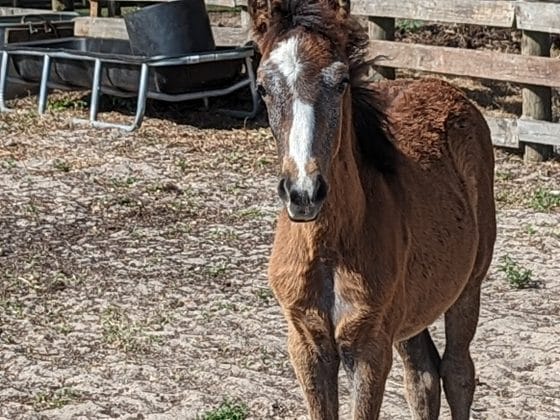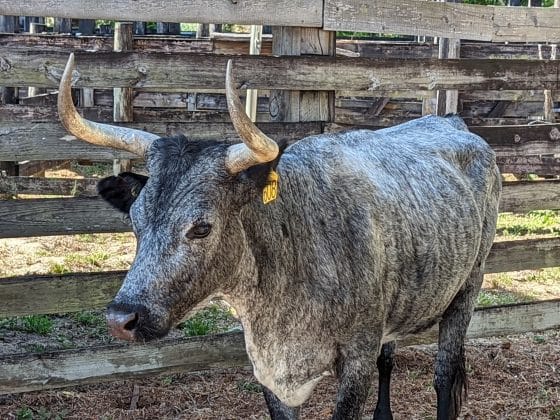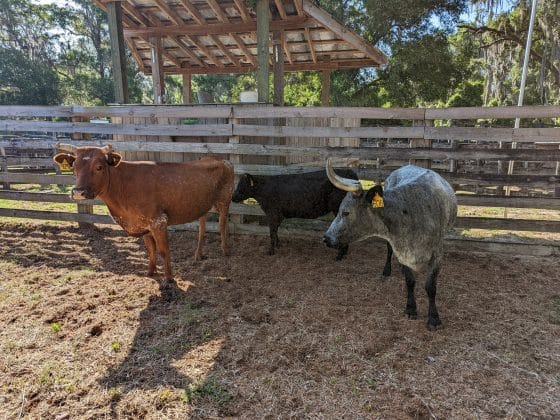By: JULIE B. MAGLIO
The small cracker cattle and horses described in the book A Land Remembered are real. Some live on the PK Ranch in the Withlacoochee State Forest. The ranch is run by the Florida Forest Service and is one of few herds of these cattle. There are herds near Tallahassee, Paynes Prairie, Kissimmee, and Hernando. Outside of Florida, they are found in Alabama and Western Georgia but are called Pineywoods cattle. In South America, they are called Criollo cattle.
This livestock has been in Florida for hundreds of years since they were brought over by the Spanish beginning in the early 1500s. The cracker cattle and horses have adapted to the environment, so they are more resistant to the illnesses and pests found in Florida and more heat resistant. In addition they require less feed and can subsist on meager foraging. Over time the cattle and horses became smaller, to allow them to better handle the heat and require less sustenance.
The Florida Forest Service holds an annual auction at PK Ranch so you can purchase these Florida-adapted livestock. Ranchers may breed in some cracker cattle so they need less pesticides and antibiotics.
Machado explained that private breeders also come to the auction to buy and sell in order to keep the gene pool healthy and keep the breed going strong.
“This is a great operation because it’s not meant for profit. It’s meant to keep the herd alive. Keep the history alive,” said Jose Machado, Florida Forest Service.
Machado, who is originally from Cuba, grew up on a cattle ranch there. His grandfather raised cattle and tobacco. His family came to Florida in 1971. The cattle his grandfather raised in Cuba were the same cattle he now raises at PK Ranch.
The state of Florida is a pioneer in the nation’s cattle industry. “Florida had a cattle industry way before Texas, Oklahoma, New Mexico,” Machado stated. We were shipping cattle to Texas, we were shipping cattle all over the Caribbean from here.”
Machado explained, “When the Spanish abandoned their cattle back in the 1500s, they not only survived, they thrived in the swamps west of Saint Augustine and a little farther south.”
He said that when people started to settle in Florida, they began to gather the cattle herds and sell them off.
Brooksville was heavily involved in the early cattle industry with the Lykes family building their operation here and then expanding into Cuba and throughout the Caribbean.
Cracker cattle are very easy keepers and easy calving, according to Machado. Because they are lean, there is less marbling in their meat and it tends to be tougher.
“The cracker horses are smaller walking horses. Actually, they call it racking, not walking… They go all day,” he said.
“If we can get more people to keep this breed alive and keep the history alive it’d be a great thing.”
The oldest cow at PK Ranch is Old Blue, a 17-year-old cow who has had a calf every year since she was two years old. She is a sturdy, bossy animal that appears healthy and in charge of her younger counterparts. She also has quite a set of horns on her head, which she uses to steer the other cattle to where she wants them to go.
The Withlacoochee State Forest is home to history. They have cracker cattle and horses that have adapted to Florida over hundreds of years and are living history. It is important for us to preserve these adaptations and appreciate the animals that made up the large herds of cattle in years past. The horses are special too in that they can work all day in the Florida heat and humidity. If these animals were to disappear, we might question whether the accounts by Florida crackers were accurate or exaggerated. This livestock is part of our history and keeping them keeps the history alive.
Correction: A reader pointed out that the use of the word heifer to describe Old Blue is incorrect. She would be a cow, whereas a heifer is a female that has not yet had a calf. She then becomes a cow after delivering offspring. Some will also refer to a 2nd calf heifer, which is an animal that has a calf on her side and is pregnant with her second.

